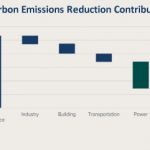How can we lower the lifetime emissions of building materials? Bernardino D'Amico at Edinburgh Napier University references his research to show how hemp-based materials can substitute for concrete. And it’s even more effective than timber, a popular low-carbon alternative. Growing industrial hemp can absorb twice as much CO₂ compared to growing trees. Raw hemp fibre can be processed into panels and mats for thermal or acoustic insulation. Hemp … [Read more...]
Embodied Carbon Emissions: understanding the different methodologies being used around the world
The measurement of the embodied carbon emissions of goods tells us what greenhouse gas emissions are generated during the production and transportation of those goods. This achieves two main things. Firstly, it allows producers to understand where their emissions are coming from, and so reduce them. Secondly, it opens the door to putting a price on those emissions, thus incentivising producers to reduce them. But, as Max Gruenig at E3G explains, … [Read more...]
46% of Buildings “Embodied Carbon” can be slashed at little to no cost
Buildings and their construction account for around 40% of all carbon emissions today. Half those emissions come from the construction alone, so buildings successfully powered by clean energy won’t come close to fixing the whole problem. John Matson and Rebecca Esau at RMI describe how industry leaders are creating the tools to measure and gather data on the “embodied carbon” in building materials (concrete, rebar, glazing, insulation, other … [Read more...]
Buildings: France and Flanders lead on decarbonising new builds
Buildings are responsible for 36% of total EU carbon emissions. So, since the start of 2021 European legislation requires all new buildings to be ‘nearly zero energy’. The frontrunners are France and Flanders in Belgium, according to a new report from the Buildings Performance Institute Europe (BPIE), writes Clare Taylor. Both jurisdictions have plans for phasing out fossil fuels in new buildings within five years. Taylor explains how Flanders … [Read more...]
How to cut Full Life-cycle Buildings Emissions
Most efforts to decarbonise buildings are focused on “operational” emissions. That’s because, once constructed, buildings are responsible for a massive 30% of global final energy use and 28% of carbon emissions. But that focus has meant the “embodied” carbon – from the materials, construction, demolition, and recycling of buildings – has received little attention, explain Meng Wang and Yihan Hao at RMI. That’s despite the numbers still being … [Read more...]






